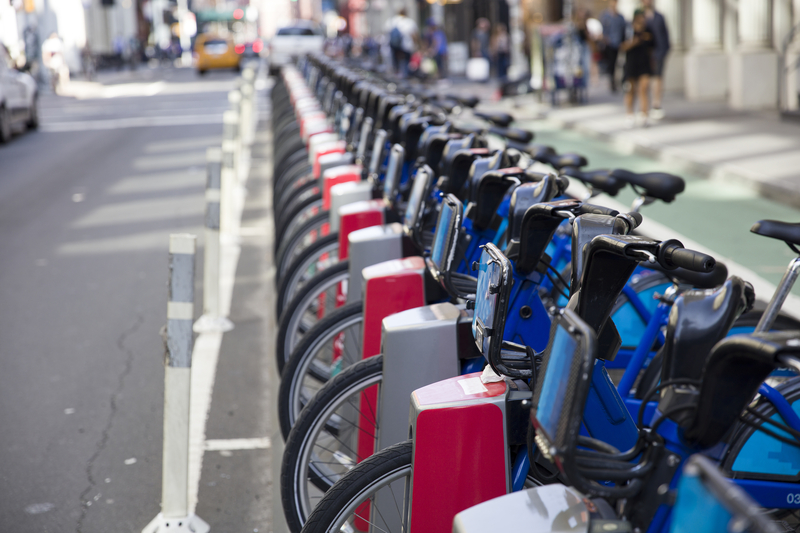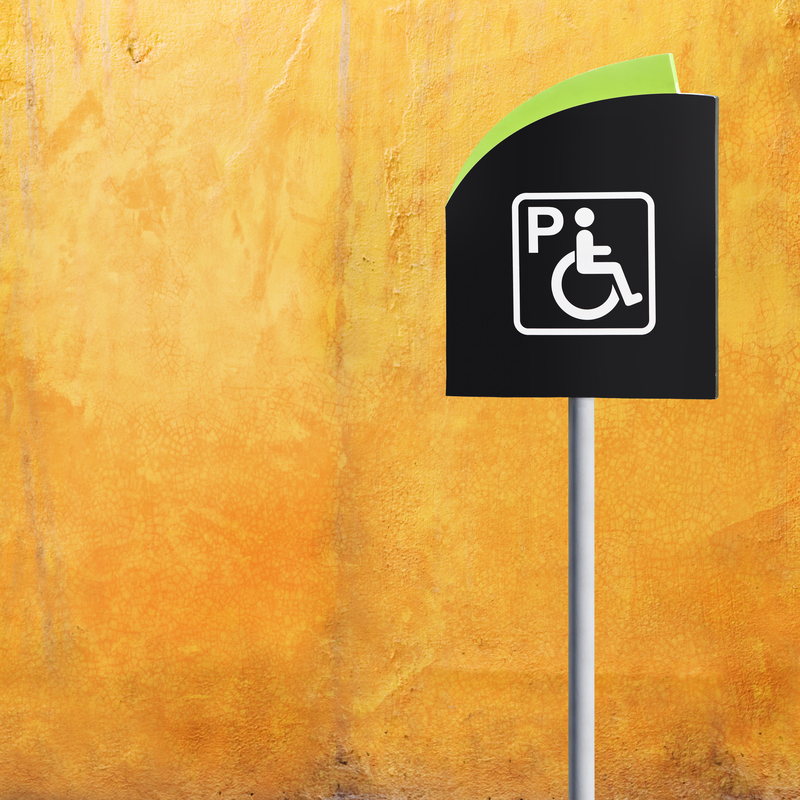
Shared e-scooters are now banned from the streets of Paris. There is rationalisation of shared transport operations in many cities after the free-for-all of the last five years or so. So is micromobility under pressure? John Nuutinen, CEO of SkedGo is well-placed to respond. SkedGo provides trip planning and other Mobility as a Service technology to companies using its application programming interface (API) which allows organisations to create their own multimodal offerings – often involving scooters.
“It pretty much depends,” he muses. “Every city is different. It depends on who's governing and what the regulations are, what the public sentiment is towards them. Some cities you go into, it’s obvious they’ve overcooked it, there's so many scooters all over the place; in others, it just seems to blend into the background a little bit better. So I think it’s a case-by-case scenario, a bit like when Uber was trying to get into different cities, some are more welcoming than others.”
So, no – he doesn’t think it’s the end for scooters – far from it. “I think they've revolutionised Mobility as a Service, they provide that first-mile/last-mile component that was missing for a lot of people,” he continues. “I think it's more about trying to adjust to each other's expectations and creating a model that works: it'll standardise itself in the longer run. It’s still a massive growth market: it's a bit of an arms race, isn't it, there's a lot of providers entering the market.”
Combination of e-scooter and public transit
SkedGo’s suggests that a combination of e-scooter and public transit is efficient when it comes to reducing carbon emissions for trips. “Wherever SkedGo installs a mobility solution, micromobility is always integrated. So it's not like people are choosing whether they should or not, they're trying to decide how many micromobility options to put into their solutions. A lot of cities are reducing car access to the centre of cities, so they need these transport options. It bodes well for the micromobility market.”
With so much flux, it’s perhaps no surprise that the concept of MaaS itself is in constant evolution. “It's great to create a stage-post to reassess and re-evaluate what MaaS is; I don't think we’re anywhere near the end of that journey, to get to something that is a final version of MaaS,” he says. “Effectively, we're learning: as each month goes by there's more data produced, there's more inputs, there's new developments, so it's an industry in evolution, it's constant flow.”
 “I don't think you can shoehorn MaaS in somewhere and hope it works” John Nuutinen, SkedGo
“I don't think you can shoehorn MaaS in somewhere and hope it works” John Nuutinen, SkedGo
The next challenge is to create something that really chimes with the public. “I look at the term ‘Mobility as a Service’ and it’s probably something that people don't understand,” Nuutinen points out. “If you're a regular commuter, you're never going to call it MaaS - because in the end, it's something that should be part of the transport furniture. It should enable - it shouldn't need to be carved out as something different. That's my opinion anyway. When I go to a party or a barbecue and I talk to people, I’m really reticent to call it Mobility as a Service because people don't get it. But when you explain what it does, they get it - but to them it seems intuitive, it should be done anyway.”
Sounds like good advice to anyone at a barbecue. He laughs: “I avoid naming it. But starting from the bigger vision, it has changed the way that the world moves - I think that's a good place to start with.”
In the US, he notes that there is more reference to Mobility on Demand. “I found that sort of made a little bit more sense to me,” he says. “I've seen new concepts like an Mobility as a Feature [see Sampo Hietanen: ‘We needed better dreams’ in ITS International January/February 2023], for example. So I guess you've got to call things something. These are the terms we've got at the moment.”
No one-size-fits-all
Regardless of what we actually call transportation services, SkedGo sets a great deal of store by tailoring its solutions to different groups or organisations, rather than offering a one-size-fits-all approach. “I think that’s our differentiation,” says Nuutinen. “It has to do with our philosophy because we are trying ‘to improve lives, one trip at a time’. That's the mission statement. To do that, you can't go with the same model and expect the same results. And part of putting the user at the centre of the transport ecosystem is to enable them to make informed decisions about their transport options. So it can't be the same - because all those ecosystems are different. So what we focus on is delivering purpose-built solutions. When you talk about one-size-fits-all, or ‘scale’, or ‘templating’, it really doesn't achieve that.”

To really make a MaaS-type concept hit home for users, it’s got to be profoundly resonant for them, Nuutinen insists. “Localisation is the key,” he explains. “For me to pick up an application, it's got to resonate. I've got to feel like it belongs where I am and vice versa. So that's what we focus on: configuring and localising - not customisation. It's the simple things: it's integrating transport service providers to a granular level, so you can integrate a small taxi company with eight vehicles - this is the type of stuff we're doing with clients like [community transport provider] Feonix. Not only do they want that granular localisation, they need a purpose for people to adopt those capabilities. And in their case, it's paratransit, so it delivers a benefit or a use even before we talk about Mobility as a Service. When you combine that purpose with MaaS, you have something not only practical, but something that changes the lives of people that use it.”
Nuutinen and others at SkedGo speak a lot about the importance of access to transportation services. “It's one of our core values: inclusiveness is a big deal,” he acknowledges. “It doesn't matter if we're dealing with disabled commuters or disadvantaged communities, that inclusiveness is very important because that's what public transit, for example, has tried to achieve. And it continues to strive. They're continuing to try to ensure that no one is left behind.”
MaaS should facilitate this, he thinks: “It should be one of the industry-leading technologies that enables that - and I think it truly does. So regardless of the commercial models, or whatever else you look at it from a business perspective, MaaS has to be inclusive.”
"When I go to a party or a barbecue and I talk to people, I’m really reticent to call it Mobility as a Service because people don't get it"
Getting this right, in multiple different situations, is nuanced to say the least. Nuutinen takes Feonix as an example again: “They have a reason for being, they deliver a value already. What SkedGo brings to it just enhances or complements what they already have. I don't think you can shoehorn MaaS in somewhere and hope it works: the commercial basics, the strategic rationale is already going to be there. MaaS can complement or supplement that.”
Quantifiable benefits
It won’t be appropriate for everyone, but the benefits can be quantified, Nuutinen says. “We are able to quantify the value and that's because we the more time has passed, more data is available and so we've been able to benchmark now,” he explains. “So there's no doubt that Mobility as a Service does deliver a value, whether it's a community or commercial value: you can save time, money and costs. Whether that stacks up commercially for an organisation depends on what they're trying to achieve. Local government agencies, for example, are not trying to create a profit - they're trying to create efficiency, they're trying to deliver value to their constituents.”
The potential of MaaS in decarbonisation and reducing congestion is interesting here. But bus and train companies might see something different. “Now what they see is the door-to-door life of their customers,” Nuutinen suggests. “Previously what they’d see is a partition view: every time someone tapped on or tapped off. They know what their customers are doing during that period, but had no idea what's happening the rest of the time. [MaaS] enables them to gather important data and enables them to align their assets or investment into the areas where most of the demand is. So there's all sorts of value that happening all the time. But I think we put too much emphasis on the revenue value of Mobility as a Service.”
“It’s amazing when I go into a city that I was in probably 10 or 20 years ago, and there's parks where roads used to be”
That’s what SkedGo would describe as the ‘corporate market’. “A corporate market is looking for a return on investment and they want to see hard dollars,” he continues. “That will happen, and we're starting to see it happen already. We talk about ‘B2B MaaS’ in places such as the Netherlands or in France, where they've aligned MaaS solutions to accommodate changes in legislation that provide tax benefits to commuters to adopt greener transport options. There we start to see the first signs that there is a commercial model that delivers a profit to businesses. Whether there's a B[usiness] to C[onsumer] MaaS provider out there that can generate enough volume to create incremental revenues to support their business model, that's only a matter of time. But at the moment, that's probably where the most difficult market is in Mobility as a Service.”

But as cities restrict car use and attempt to improve air quality, alternative transportation options are being actively sought. “I think it's going one way, honestly,” Nuutinen says. “The funding cities are providing for lower-carbon options is just one indicator; they're looking for greener ways to transport their constituents. It’s amazing when I go into a city that I was in probably 10 or 20 years ago, and there's parks where roads used to be. It makes for a better, healthier standard of living.”
Transport hubs will take on extra importance in this scenario, which perhaps means that services – perhaps for recreation or leisure - will grow up alongside them to help attract people to mass transit.
“A bit of a horse-and-cart situation, isn't it?” he smiles. “Do you build it and they'll come, or is it the other way, based on demand? I've seen a lot of tenders to do with these transport hubs and at the moment it's a collection of transport options. But I think it'll need to be more than that to attract people and to create some vibrancy for that location - something more than just the transport options.” He laughs: “But you can see how it could go horribly wrong in some bleak transport depot scenario versus a vibrant cafe culture type of place that people go anyway.”
'MaaS has got to deliver more than the basics'
He admits he is sounding like a broken record when he says: “Ultimately, for MaaS to work, it's got to deliver more than just the basics. There's got to be a purpose behind it. I don't think there's one type of MaaS in the end: there'll be a common thread through all this - having solutions that have a purpose, that deliver more than just one value. But it’s not MaaS if you're just buying a ticket and putting people on several modes of transport. You need to deliver more value.”
Inclusiveness is critical here, Nuutinen thinks. “It's got to serve society, not a certain portion of society that want to use transport services in a certain way. So it's both a challenge and opportunity for local government authorities to shape what their cities look like. It's an opportunity for transit agencies to basically create a different infrastructure that supplements or complements what they've got already. It's not there to replace anything: this is this is about making the act of moving around, with transport, better.”
Western Europe is “still the most vibrant market at the moment, with the most creative thinking behind where MaaS is going”, he says. But the US will catch up, Nuutinen believes. “The US is emerging now as a quiet sleeper. It got to MaaS a little bit late but I think it'll start to drive the agenda over time.”
The African continent offers other interesting opportunities too, he thinks. “It’s an enormous market that’s starting from the base up.” In Eastern Europe and the Middle East, MaaS may look different again because the commercial rationales may be different. “They've got a different problem to solve, and that's where the purpose-built solutions come in,” Nuutinen says. “They can't just import a solution and say: ‘Hey, here's MaaS’.”
But notwithstanding the potential for individual markets, he is optimistic for what seems like a change in mindset. He concludes: “I think it's encouraging that it is now a global wave that’s starting to break rather than just a regional focus on Mobility as a Service.”











